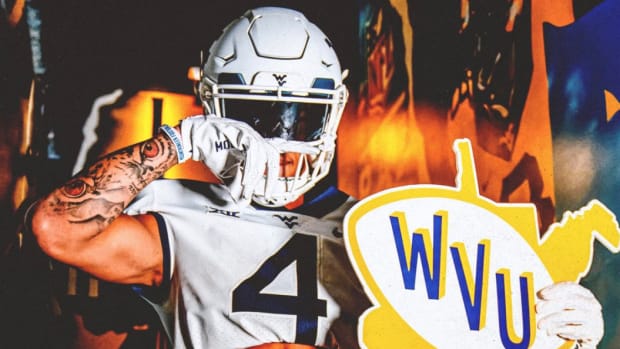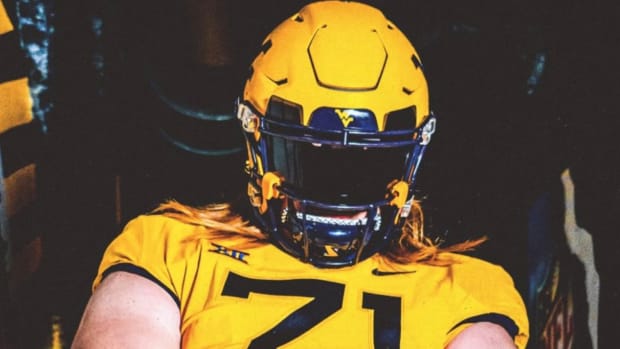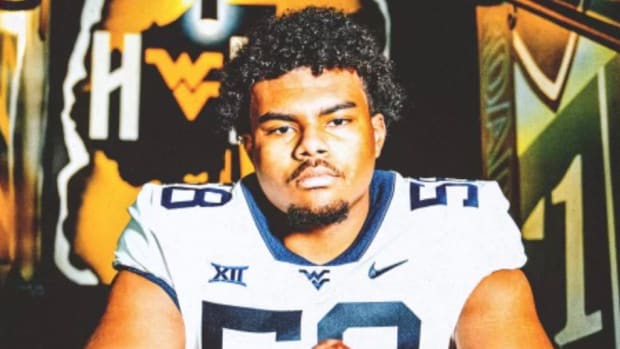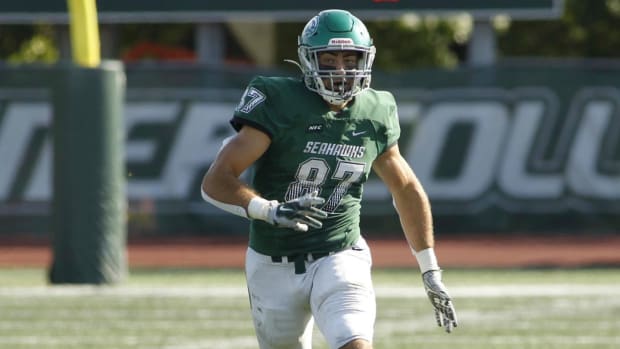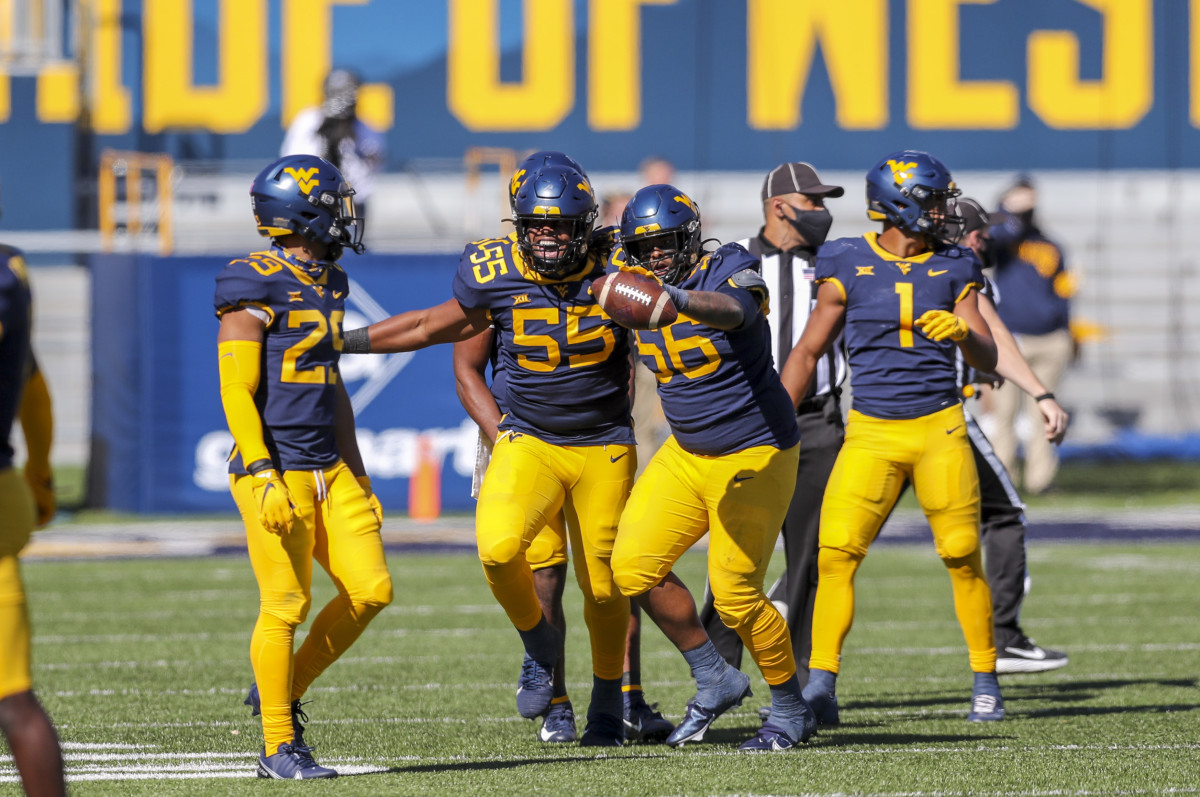
West Virginia Making its Case as the Top Defense in the Country
As the final stats tallied Sunday morning, The West Virginia Mountaineer defense came out on top as the number one defense in the country, allowing just 240.3 total yards per game. Air Force is right behind at 241.0 yards per game but only played one game so far this year, and it was against Navy, a team that is averaging 271.4 yards per game through six games.
Clemson is third at 264.6 yards a game, and Oklahoma State is not too far behind at sixth, sitting with an average of 274.3.
When the rankings came out, my initial thought was, “it’s not surprising,” and it comes from two different angles. The first is the eye test, such as, the Mountaineer defense is physically wearing out offenses. It is obviously something that we hadn’t seen here since joining the Big 12 Conference and may date back to the ‘90s when Steve Dunlap was the defensive coordinator. He had the Mountaineers ranked number one in total defense in 1996.
Then, there is the fact West Virginia has not seen a good offense yet. In other words, the offenses they have faced are not particularly good, and the numbers are somewhat skewed. There really isn’t enough body of work despite playing four games. Still, they have exceeded early expectations.
West Virginia opened the season against an average FCS opponent in Eastern Kentucky. Most of the teams the Mountaineers are competing for the top-ranked defense also have a lower level team on their schedule and really, not important on judging this Mountaineer defense.
They were expecting to get their first big test of the season in the Big 12 Conference opener the following week against the Oklahoma State Cowboys. However, starting quarterback Spencer Sanders was out with an injury, and Oklahoma State had to go with freshman quarterback Shane Illingworth.
West Virginia was challenged, though, facing Heisman hopeful running back Chase Hubbard and his counterpart LD Brown.
The Mountaineer offense gave up a scoop and score, and the defense gave up a 70-yard run to LB Brown and fell behind 17-0 early. The Cowboys defense is a senior-led group that has NFL talent and locked down a struggling Mountaineer offense that was still trying to figure out its identity and could not score to put pressure on a young quarterback. As a result, they leaned on their highly talented running backs to continue winning the field position and closed the game out with the duo in the final moments of the game.
Oklahoma State racked up 203 yards on the ground when it was all said and done. No matter how you spin it, that is not good enough. Neal Brown credited the Cowboys success to missed assignments, especially LD Brown’s 70-yard touchdown run.
Going game by game, this is where it gets a little odd, and maybe the numbers can be deceiving.
As previously mentioned, Oklahoma State built a lead early and sat on it. They were not at full strength but were still able to run the ball. In the other two games the Cowboys have played this year (Tulsa, Kansas), they averaged 218 yards per game on the ground. That’s a difference of -15 yards, and using the same equation for total yards, West Virginia held them to 96.5 yards less. But again, they seemingly ran the ball at will and did to close out the game.
The Mountaineers hosted Baylor the next week, and they shut down their running game to just 27 yards and held them to 256 yards of total offense.
Baylor never led in the game but could have grabbed the momentum and knotted the game up early after a strip-sack fumble deep inside WVU territory. Yet the defense was able to hold them out of the end zone, and Baylor missed the field goal.
Throughout the game, there were plenty of examples of the West Virginia defense coming up big, time and time again, and they sealed the win in double overtime with an interception from Tykee Smith.
Baylor was not known for their offense during the Matt Rhule era but built a solid football team on all three sides of the ball and did compete for the Big 12 title last year. They returned many vital pieces on the field but lost head coach Rhule to the Carolina Panthers. They did bring in Larry Fedora as offensive coordinator, who’s known around college football for his high production offenses.
Baylor’s only other opponent was Kansas, and they only tallied 352 yards of total offense. The low offensive output could be a result of two kickoff returns for touchdowns.
This past weekend West Virginia hosted Kansas, a team that was averaging 149.3 yards on the ground and 146.7 through the air, totaling 296.0 yards per game. The Mountaineers held their all-conference running back Pooka Williams to just 21 yards and the Jayhawks to 62 yards on the ground and 157 yards of total offense.
On paper, West Virginia is ranked first in the country in total defense yards allowed, but a little bit of reading shows that it can be flawed, especially in a small sample size. Basically, everything good revolves around Kansas, with all three of the Mountaineers conference opponents having played Kansas. If you take out Oklahoma State, Kansas, and Baylor’s offensive stats against West Virginia, the Mountaineers, on average, held them below their season average.
West Virginia defense average yard differential
Rushing yards -92.8
Passing yards -17.6
Total yards -110.5
Points -8.4
Turnovers +0.9
3 Down % -10.1
First downs -6.6
This was a long-winded way of stating the obvious, West Virginia stats are a bit skewed nationally. Let’s take Alabama for an example. They are generally one of the top defenses in the country every single year. Right now, they’re ranked 61. Do you think they’re the 61 best defense in the NCAA out of 77? Of course, not. They may not have the stingy defenses in years past, or they gave up 647 yards against Ole Miss, one of the nation's best offenses.
Like judging Alabama on the eye test, the same has to be applied for the Mountaineers other than looking at just the numbers.
West Virginia has a relentless defensive line continuously causing havoc in the backfield, led by the Big 12 Conference Preseason Defensive Player of the Year, nose tackle Darius Stills. A unit that may go down as the best to ever do it by the end of the season.
A linebacking core with the speed that can cover sideline to sideline highlighted by the league leader in tackles (35) middle linebacker Tony Fields II. Then, a physical, athletic secondary covered on the back end by free safety Alonzo Addae and leads the Big 12 in interceptions (2).
This edition of the Mountaineer defense has been impressive. Their toughest challenges are ahead of them, most notably Oklahoma. Still, with this defense, as long as they continue to put in the effort and play with the high energy they've possessed the last two games, they give West Virginia a fighting chance every week to pull out a win and by the end of the season, they may just have an argument as the top defense in the country.
West Virginia defensive stats against each opponent (differential among other opponents)
Oklahoma State
Rushing: 203 (-15)
Passing: 139 (-81)
Total: 342 (-96.5)
3rd Down %: 50.0 (+4.5)
First Downs: 20 (+.05)
Baylor
Rushing: 27 (-176)
Passing: 229 (+80)
Total: 256 (-96)
3rd Down %: 25 (-28.3)
First Down: 15 (-9)
Kansas
Rush: 62 (-87.3)
Pass: 95 (-51.7)
Total: 157 (-139)
3rd Down %: 15.4 (-6.6)
First Downs: 7 (-11.3)
You can follow us for future coverage by clicking "Follow" on the page's top righthand corner. Also, be sure to like us on Facebook & Twitter:
Facebook - @WVUonSI
Twitter - @SI_WVU and Christopher Hall @WVHallBilly

